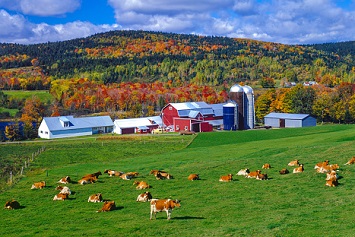The EPA has issued a direct final rule—that is, an action for which there was no prior opportunity for public comment, and, in this case, one that is effective immediately—that appears to put an end to a 10-year dispute over whether air emissions from animal waste at farms should be subject to reporting under the Comprehensive Environmental Response, Compensation, and Liability Act (CERCLA) and the Emergency Planning and Community Right-to-Know Act (EPCRA).
The final rule comprises two actions. First, it complies with a court order that vacated a 2008 Agency rule that exempted all farms from reporting air releases from animal waste under CERCLA and reporting of air releases from animal waste at all farms other than large concentrated animal feeding operations (CAFOs) under EPCRA. Next, the direct final rule does the exact opposite by implementing an exemption from all CERCLA and EPCRA reporting of these air releases at all farms. The second action implements the complete exemption from notifications, which Congress wrote in the Fair Agricultural Reporting Method (FARM) Act, part of the Consolidated Appropriations Act, 2018 that Congress passed in March 2018.
The critical point here is that, as of publication of the direct final rule in the August 1, 2018, Federal Register (FR), no farm or CAFO, regardless of size, needs to report air emissions of CERCLA-listed pollutants (chiefly ammonia and hydrogen sulfide) from animal waste even if such releases are not allowed by permit or if they exceed the CERCLA or EPCRA reportable quantity ((RQ), that is, in the case of ammonia or hydrogen sulfide, an air release that equals or exceeds 100 pounds in any 24-hour period).
While that exemption is straightforward, the legal and regulatory background is not and can be best clarified by looking at the roles each of the three branches of the federal government played in developments.
EPA
In 2008, the EPA issued its CERCLA/EPCRA Administrative Reporting Exemption for Air Releases of Hazardous Substances from Animal Waste at Farms (December 18, 2008, FR). The rule exempted all farms from CERCLA’s reporting requirements for air releases of any hazardous substance from animal waste. Under EPCRA, the 2008 final rule exempted reporting of such releases if the farm had fewer animals than a large CAFO, as defined by the Clean Water Act.
D.C. Circuit
In April 2017, the U.S. Court of Appeals for the D.C. Circuit found that the EPA’s 2008 exemption rule was based on the Agency’s erroneous assertion that all required CERCA and most EPCRA reports of air emissions from animal waste at farms were of little value to the communities where these releases occurred and the emergency response entities that received such reports. In vacating the rule, the court found that the Agency could not rely on general rulemaking authority or a de minimis exception to issue an administrative reporting exemption for this category of releases, particularly where the Agency had failed to identify any statutory ambiguity as the basis for its interpretation of the reporting requirements. The court issued a mandate effectuating the vacatur on May 2, 2018.
Congress
While the D.C. Circuit’s mandate was pending, Congress passed the FARM Act, which the president signed into law on March 23, 2018. The act exempts reporting of air emissions from animal waste at a farm under CERCLA Section 103(e). While the FARM Act explicitly eliminates only the CERCLA notification requirement, notification under EPCRA is required only if the release occurs in a manner that would require notification under CERCLA. In other words, if notification of an air release from animal waste is not required by CERCLA, it is also not required by EPCRA. In compliance with the Court’s order, the EPA’s direct final rule eliminated the exemptions under the 2008 rule and in the same action incorporated by regulation the CERCLA notification exemption, which also triggered the EPCRA exemption. The new regulatory language adds “Air emissions from animal waste (including decomposing animal waste) at a farm” under the list of exemptions from CERCLA notification requirements at 40 CFR 302.6(c)(3).
Air Releases Only
The EPA emphasizes that the exemption is narrow.
“It is important to note that the FARM Act’s reporting exemption is tied to the nature or manner of these releases rather than to a specific substance,” says the Agency. “The FARM Act does not exempt substances typically associated with animal waste (such as ammonia and hydrogen sulfide) from reporting altogether; rather, it exempts from reporting only the release of these substances from animal waste into the air.”
In other words, the FARM Act and the direct final rule provide no exemption from releases of CERCLA-regulated substances to land or water.
The direct final rule was published in the August 1, 2018, FR.

